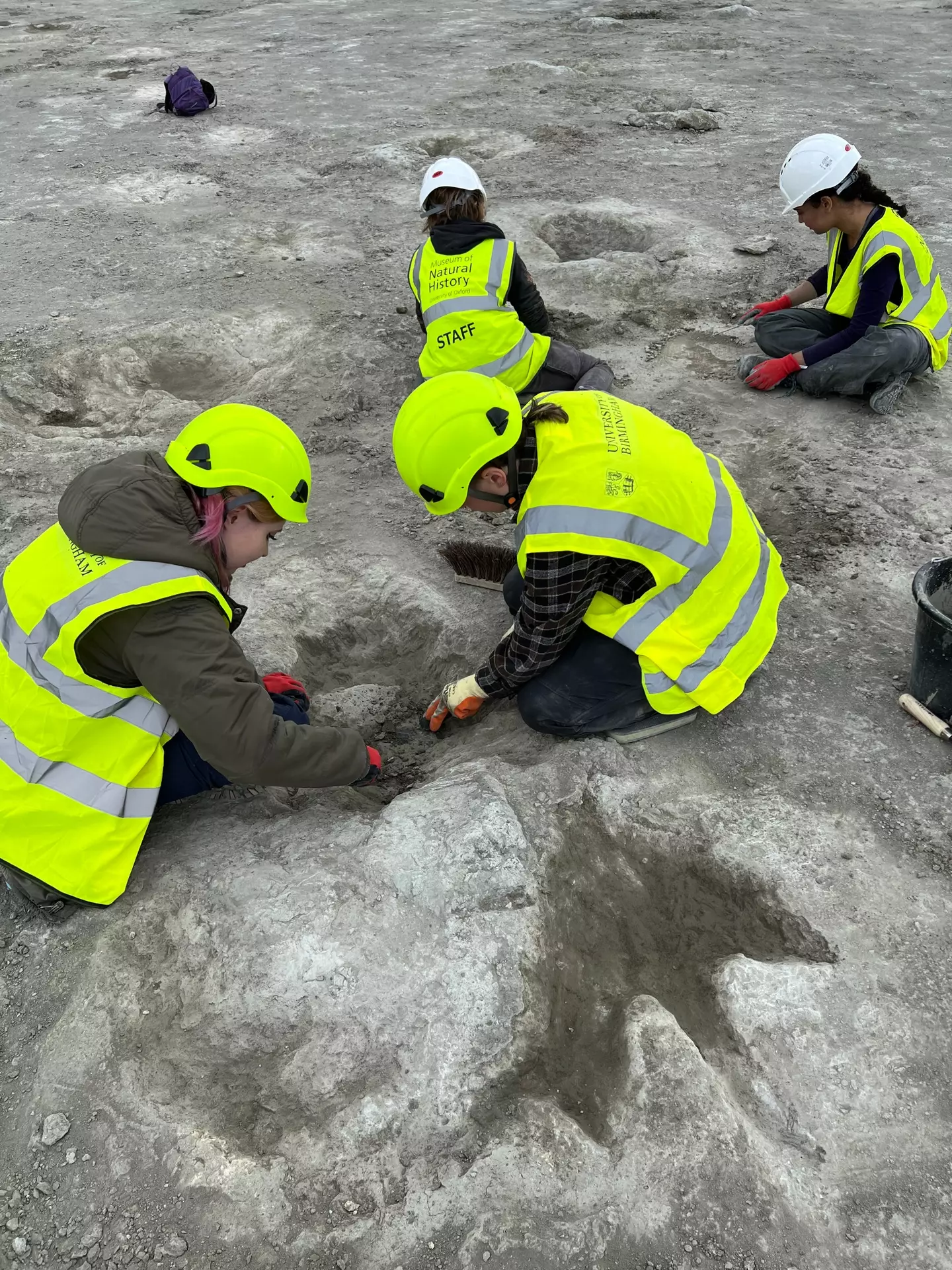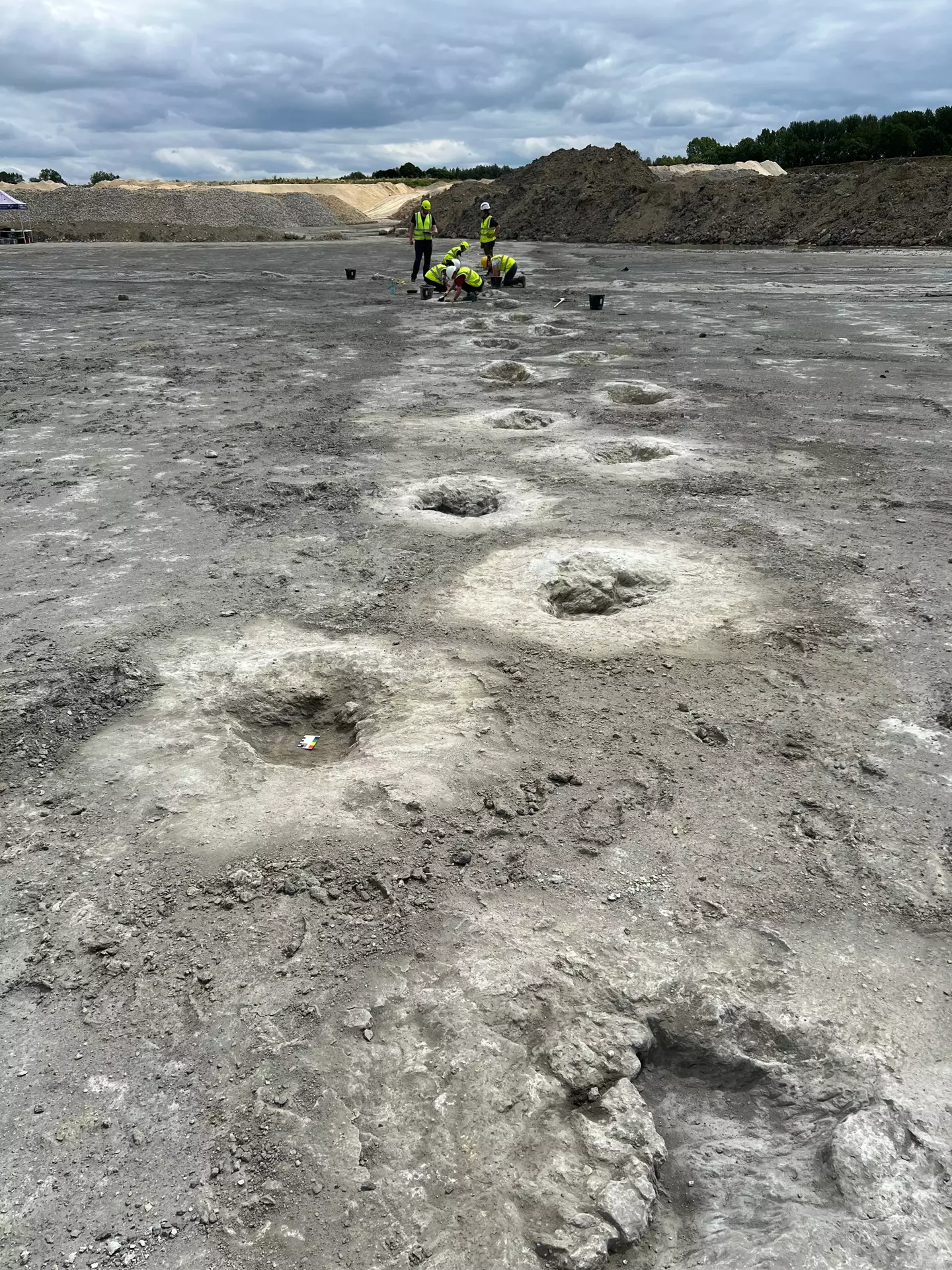In a groundbreaking discovery, researchers from the University of Birmingham and the University of Oxford have unearthed a treasure trove of dinosaur footprints in an Oxfordshire quarry. The astonishing find has revealed a “dinosaur highway” dating back an impressive 166 million years.
The team of researchers stumbled upon nearly 200 footprints, including five continuous trackways, buried beneath the mud. The longest trackway measures over 150 meters in length, providing a unique glimpse into the lives of these prehistoric creatures.

The footprints are believed to have been made by long-necked herbivorous dinosaurs, such as the Cetiosaurus, and carnivorous dinosaurs like the Megalosaurus. This remarkable discovery offers valuable insights into the behavior, size, and interactions of these ancient beasts.
According to Dr. Duncan Murdock, an earth scientist at the Oxford University Museum of Natural History, “The preservation of the footprints is so detailed that we can see how the mud was deformed as the dinosaurs’ feet squelched in and out.” This level of detail allows researchers to recreate the muddy lagoon environment that these dinosaurs inhabited.

Professor Richard Butler, professor of palaeobiology at the University of Birmingham, emphasized the significance of this discovery, stating that it is an important part of the UK’s national Earth heritage. The team’s 3D models will enable researchers to continue studying and sharing this fascinating piece of history for generations to come.


